
A rubric in student language used by elementary students to assess their generalizing skills.
- Subject:
- English Language Arts
- History
- Life Science
- Mathematics
- Physical Science
- Social Science
- Material Type:
- Assessment
- Date Added:
- 07/03/2017

A rubric in student language used by elementary students to assess their generalizing skills.
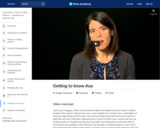
Get to know more about Ana.
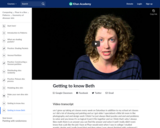
Get to know more about Beth.

Students are introduced to different ways of displaying visual spectra, including colored "barcode" spectra, like those produced by a diffraction grating, and line plots displaying intensity versus color, or wavelength. Students learn that a diffraction grating acts like a prism, bending light into its component colors.

About the Arts, Care & Connection Lesson Collection: Arts for Learning Northwest collaborated with Oregon teaching artists on this collection of arts integration modules designed for K-5 students, with integrated social emotional learning content in the areas of dance, visual arts, theater, and music.
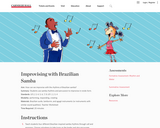
Students use samba rhythms and percussion to improvise in rondo form.
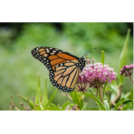
Some living things and their offspring have traits that are similar, but not exactly alike. Students will identify the traits of different plants in the garden.
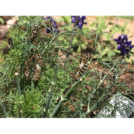
Some living things and their offspring have traits that are similar, but not exactly alike. Students will identify the traits of different plants in the garden.
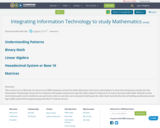
This course is is a collection of resources on OER Commons curated for Adult Education instructors and students to show the integration of math into the Information Technology Career Sector. Students will analyze and practice specific skills related to being in IT as well as develop math skills. Modules in this curriculum guide can be studied in any particular order as one does not necessarily build upon the other. Each includes the idea of building mathematical and logic skills required for programming and other IT related careers.
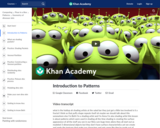
Brief overview of what we'll cover in this lesson.

Shape grammars are systems of visual rules by which one shape may be transformed into another. By applying these rules recursively, a simple shape can be elaborated into a complex pattern. This course offers an in-depth introduction to shape grammars and their applications in architecture and related areas of design. More specifically, it involves manipulation of shapes in the algebras Uij, in the algebras Vij and Wij incorporating labels and weights, and in algebras formed as composites of these. Discussions center on rules and computations, shape and structure, and designs.
The development of systems and network concepts for students can begin with this highly interactive inquiry into cell phone networks. Cell phones serve as a handy knowledge base on which to develop understanding. Each cell phone represents a node, and each phone’s address book represents an edge, or the calling relationships between cell phones. Students conceptualize the entire cell phone network by drawing a graphic that depicts each cell phone in the class as a circle (node) connected by directional lines (edges) to their classmate’s cell phones in their address book. Students are queried on the shortest pathway for calling and calling pathways when selected phones are knocked out using school and classroom scenarios.
Students then use a simulation followed by Cytoscape, visually graphing software, to model and interrogate the structure and properties of the class’s cell phone network. They investigate more advanced calling relationships and perturb the network (knock out cell towers) to reexamine the adjusted network’s properties. Advanced questions about roaming, cell towers and email focus on a deeper understanding of network behavior. Both the paper and software network exercises highlight numerous properties of networks and the activities of scientists with biological networks.
Target Audience:
This is an introductory module that we recommend teaching before each of our other modules to give students a background in systems. This module can be applied easily to any content area and works best as written for students between 6th and 12th grades but can be adapted for other ages. The lessons work best when in-person with students. If you are looking for an Introduction to Systems for remote learning, please use our Systems are Everywhere module.

In this activity, learners use a laser pointer and two small rotating mirrors to create a variety of fascinating patterns, which can be easily and dramatically projected on a wall or screen. In this version of the activity, learners use binder clips to build the base of the device. Educators can use a pre-assembled device for demonstration purposes or engage learners in the building process.
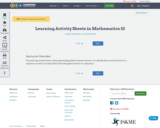
This learning activity sheet is about generating patterns where learners can identify terms and nth terms in a sequence as well as it helps them formulate general terms of a sequence.
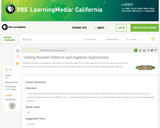
Students practice using algebraic expressions by recording data from a video segment in which two staircases ascend at different rates. They record the patterns in two-column tables, draw line graphs and write simple algebraic relations.
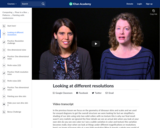
First we need to get comfortable with higher vs lower resolution details.

Repeated motion is present everywhere in nature. Learn how to 'make waves' with your own movements using a motion detector to plot your position as a function of time, and try to duplicate wave patterns presented in the activity. Investigate the concept of distance versus time graphs and see how your own movement can be represented on a graph.

In this course students create digital visual images and analyze designs from historical and theoretical perspectives with an emphasis on art and design, examining visual experience in broad terms, and from the perspectives of both creators and viewers. The course addresses key topics such as: image making as a cognitive and perceptual practice, the production of visual significance and meaning, and the role of technology in creating and understanding digitally produced images. Students will be given design problems growing out of their reading and present solutions using technologies such as the Adobe Creative Suite and/or similar applications.
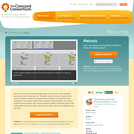
Meiosis is the process by which gametes (eggs and sperm) are made. Gametes have only one set of chromosomes. Therefore, meiosis involves a reduction in the amount of genetic material. Each gamete has only half the chromosomes of the original germ cell. Explore meiosis with a computer model of dragons. Run meiosis, inspect the chromosomes, then choose gametes to fertilize. Predict the results of the dragon offspring and try to make a dragon without legs. Learn why all siblings do not look alike.
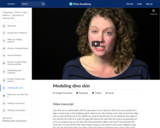
Create a basic model for your dino skin.